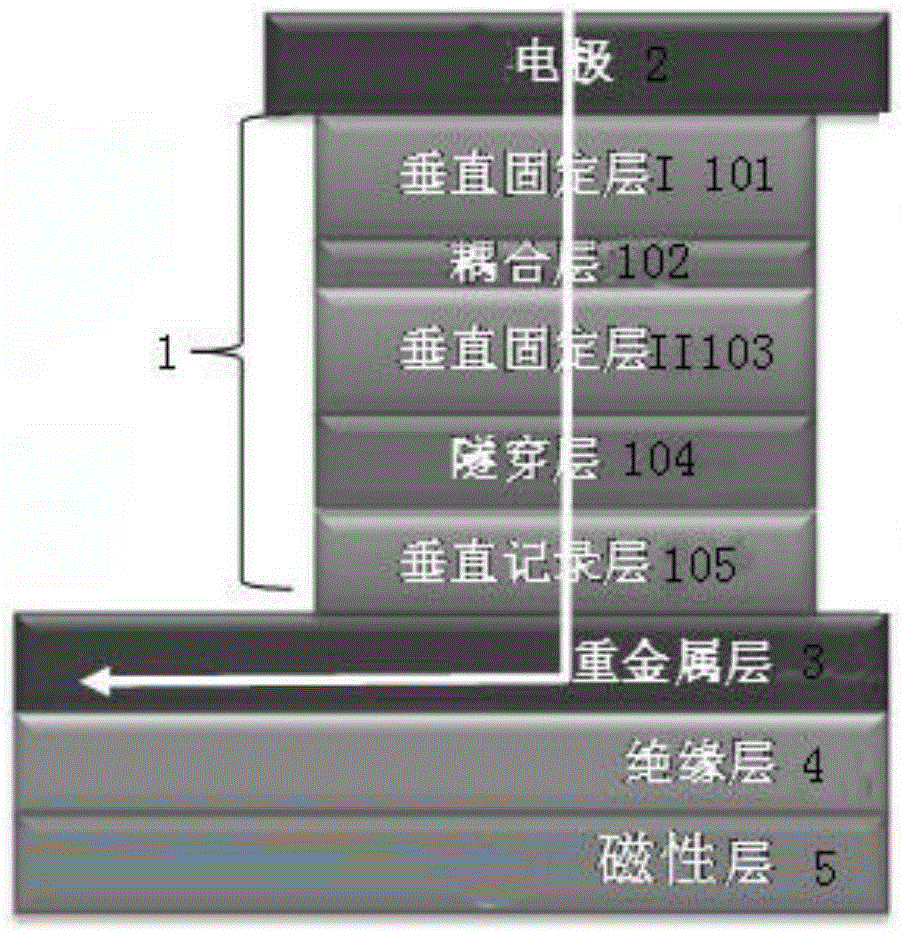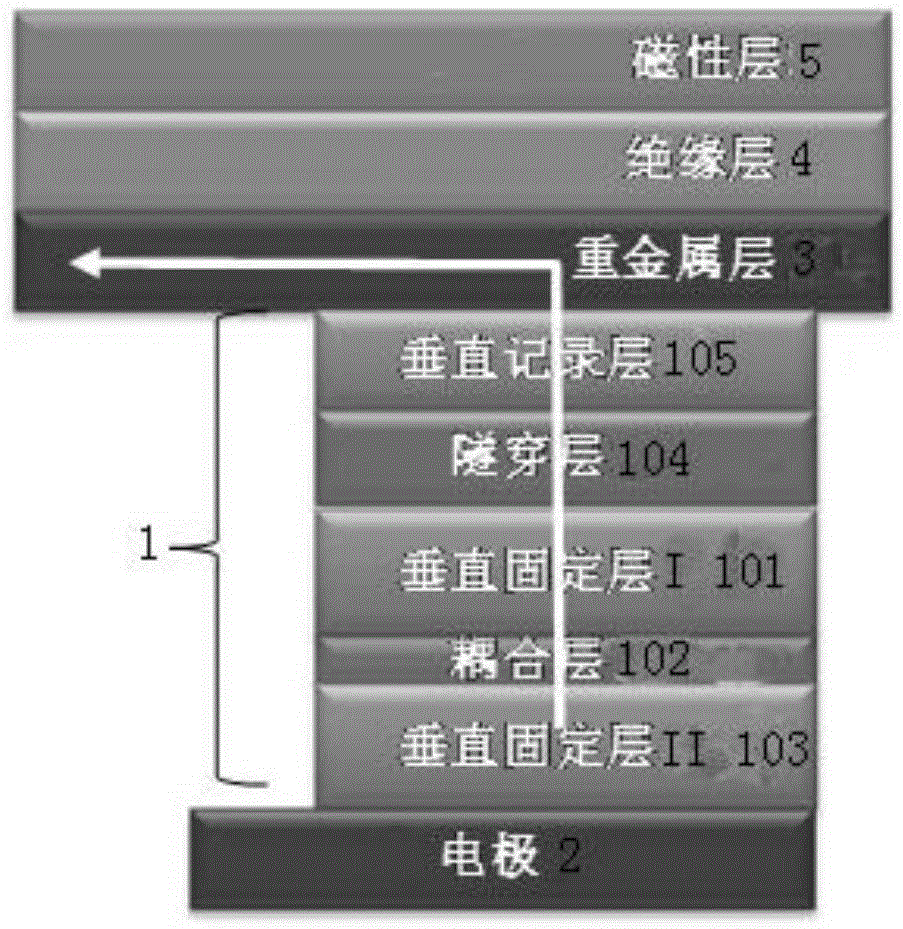MRAM (Magnetic Random Access Memory) assisted by spin Hall effect
A spin Hall effect, random access memory technology, applied in the field of magnetic random access memory, can solve problems such as increased error rate, interference, and reduced signal-to-noise ratio, and achieves the effects of low power consumption, shortened distance, and reduced interference
- Summary
- Abstract
- Description
- Claims
- Application Information
AI Technical Summary
Problems solved by technology
Method used
Image
Examples
Embodiment 1
[0020] Embodiment 1: as figure 1 As shown, a magnetic random access memory assisted by a spin Hall effect is composed of a metal electrode 2, a magnetic tunnel junction 1, a heavy metal layer 3 generating a spin Hall effect, an insulating layer 4, and a magnetic layer 5 generating a bias magnetic field; The heavy metal layer 3 producing the spin Hall effect is arranged under the magnetic tunnel junction 1; the insulating layer 4 is sandwiched between the magnetic layer 5 and the heavy metal layer 3; the metal electrode 2 is connected to the heavy metal layer 3 through the magnetic tunnel junction 1. Wherein, the magnetic tunnel junction 1 includes a ferromagnetic perpendicular magnetization fixed layer I101 and a perpendicular magnetization fixed layer II103, an antiferromagnetic coupling layer 102, a nonmagnetic tunneling layer 104, a perpendicular magnetization recording layer 105, and the recording layer 105 is in a nonmagnetic underneath the tunneling layer 104 . The magn...
Embodiment 2
[0026] Embodiment 2: as figure 2As shown, a magnetic random access memory assisted by a spin Hall effect is composed of a metal electrode 2, a magnetic tunnel junction 1, a heavy metal layer 3 generating a spin Hall effect, an insulating layer 4, and a magnetic layer 5 generating a bias magnetic field; The heavy metal layer 3 producing the spin Hall effect is arranged above the magnetic tunnel junction 1; the insulating layer 4 is sandwiched between the magnetic layer 5 and the heavy metal layer 3; the metal electrode 2 is connected to the heavy metal layer 3 through the magnetic tunnel junction 1. Among them, the magnetic tunnel junction 1 includes a ferromagnetic vertical pinned layer I101, a vertical pinned layer II103, an antiferromagnetic coupling layer 102, a nonmagnetic tunneling layer 104, a perpendicular recording layer 105, a heavy metal layer 3, an insulating layer 4, and a magnetic layer. 5. The perpendicular recording layer 105 is above the non-magnetic tunnelin...
PUM
 Login to View More
Login to View More Abstract
Description
Claims
Application Information
 Login to View More
Login to View More - R&D
- Intellectual Property
- Life Sciences
- Materials
- Tech Scout
- Unparalleled Data Quality
- Higher Quality Content
- 60% Fewer Hallucinations
Browse by: Latest US Patents, China's latest patents, Technical Efficacy Thesaurus, Application Domain, Technology Topic, Popular Technical Reports.
© 2025 PatSnap. All rights reserved.Legal|Privacy policy|Modern Slavery Act Transparency Statement|Sitemap|About US| Contact US: help@patsnap.com


